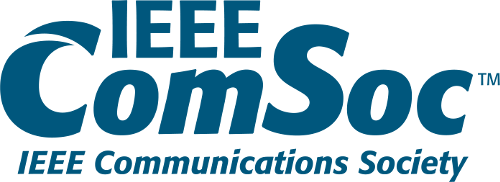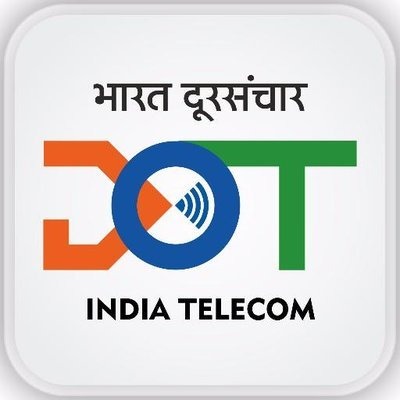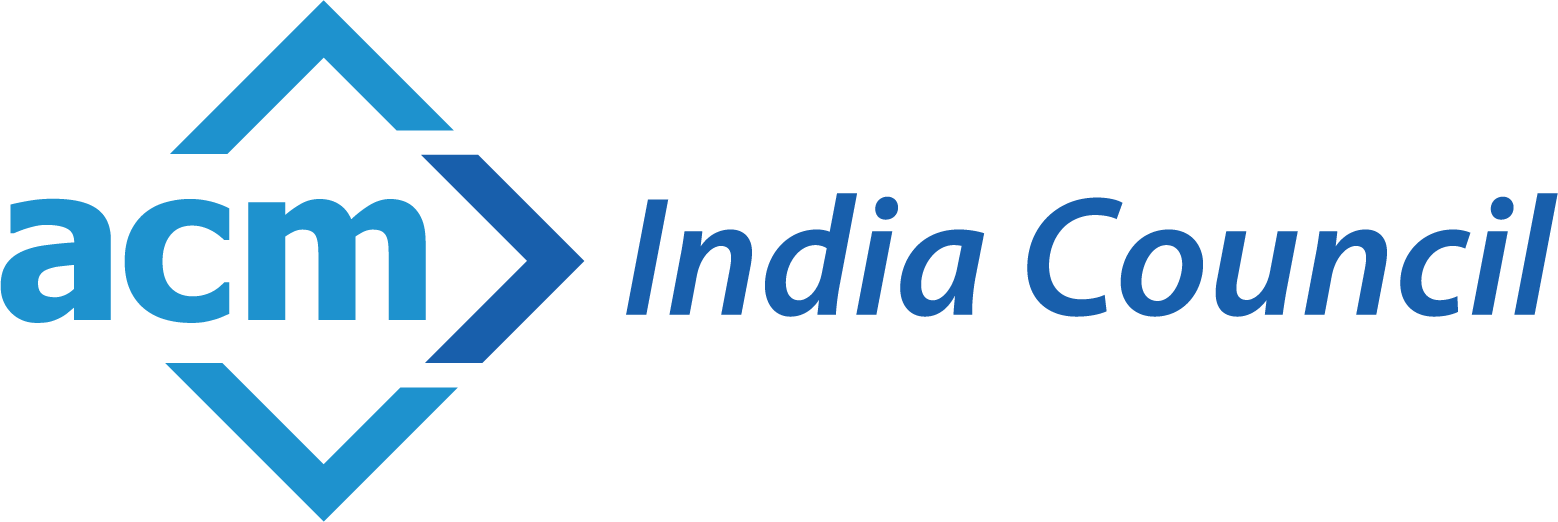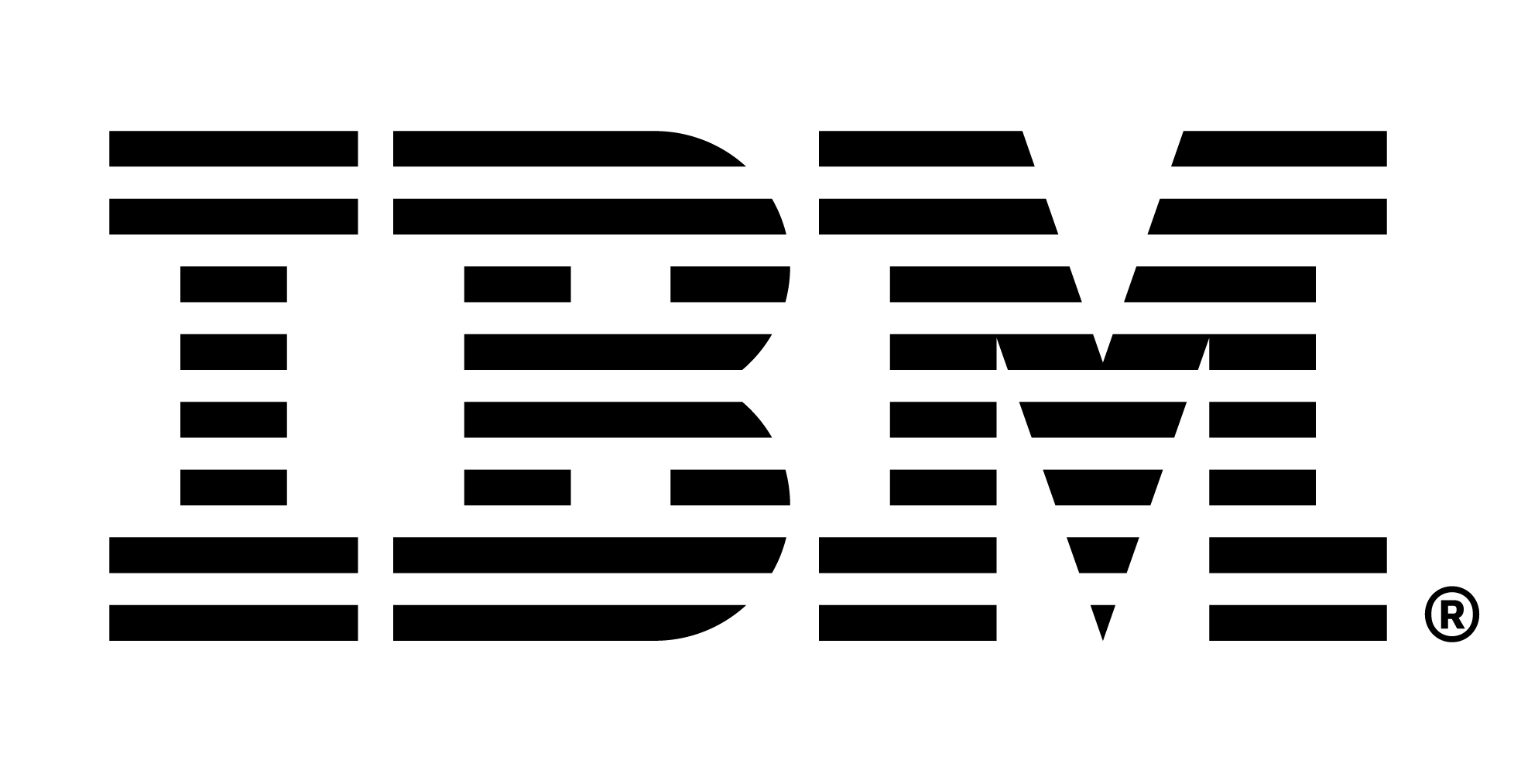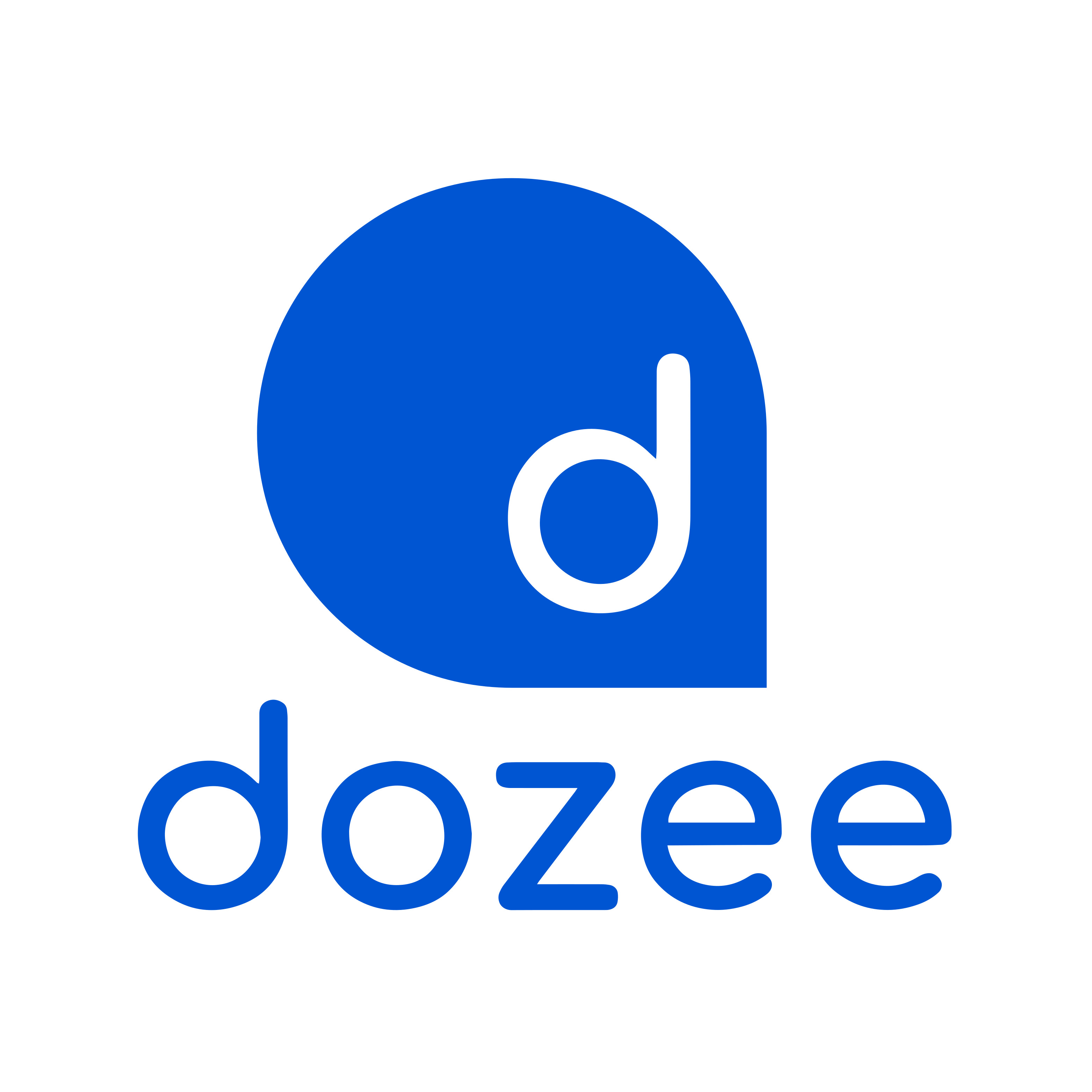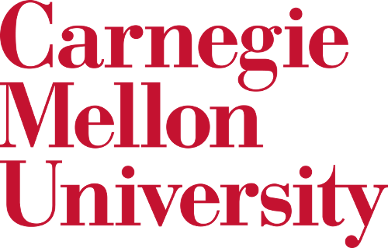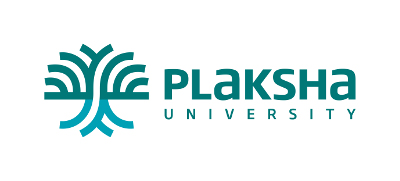Poster Session
The COMSNETS 2023 Poster Session is a forum to showcase preliminary/ongoing work in the area of computer networking and communications. COMSNETS being the premier venue for networking research in India and abroad, attracts a lot of researchers from both academia and industry. Therefore, poster presenters will benefit from lively discussions and critical feedback on their work in progress. In addition, all submissions will get detailed reviews from the poster reviewing committee.
Accepted posters will be published in the conference proceedings.
National/International travel grants will be available for a select number of poster authors. These grants will be awarded by a panel of judges.
Best Poster Awards will be awarded based on the poster session presentations by a panel of judges.
Topics of Interest
COMSNETS takes a broad view of research in communication systems and networking. The topics of interest for the poster submissions include (but are not limited to) the following:
- 5G and wireless broadband networks
- Technologies for 6-100 GHz spectrum
- Edge and fog computing/networking
- Studies on testbeds and large scale experimental platforms
- Long-range/Low-power wide-area wireless networking
- Connected unmanned aerial/terrestrial/underwater systems
- CubeSats / Satellite Networking
- Non-Terrestrial Networks
- WLAN, RFID and NFC
- Visible light communications
- Heterogeneous networks (HetNets)
- Cognitive radio & white-space networking
- Economics of networks
- Energy-efficient communications
- Cloud computing
- Enterprise, data center, & storage-area networks
- Internet architecture and protocols, Internet science & emergent behavior
- Mobility and location management
- Mobile sensing
- Traffic analysis and engineering
- Internet of Things (IoT)
- Caching & content delivery systems
- Information/Content centric networks (ICN)
- Network management and operations
- Network security and privacy
- Trusted computing
- Network science
- SDN/NFV and Network Programmability
- Internet Measurement and Modeling
- Networks for smarter energy & sustainability
- Vehicular Networks & Intelligent Transportation
- Smart Grid communications & networking
- Machine Learning and AI in Networking
- Big Data/IoT Analytics in Networking
- Blockchain and Distributed Ledger
What to submit:
Poster submissions can be a maximum of 4 pages (minimum of 3 pages) + 1 page for references. It should contain the motivation for the research problem, the solution approach, and analytical or empirical results if any. The submission must use the same template as that of the conference.
Submissions that do not adhere to the conference template will be rejected without review. All submissions must be in PDF format.
Where to submit:
Posters and additional documents can be submitted through EDAS at https://edas.info/N29771.
Important Dates:
| Paper Submission deadline | |
| Notification of Acceptance | 5th December 2022, AoE |
| Camera-ready Submission | 15th December 2022, AoE |
Accepted Posters
Please Note: At least one author per accepted paper (Main conference, Poster, Workshops, Demo) must register at the full rate, i.e., at Regular IEEE/ACM member rate, or at non-member rate even if he/she happens to be a student. In the case of an accepted paper with exclusively student authors (i.e., all authors are full-time students and no other co-authors), registration at the student rate is permissible.
Camera ready papers are due by Dec 15, 2022 (HARD DEADLINE). Please adhere to the instructions given on the website (https://www.comsnets.org/camera_ready.html) in preparing the camera ready manuscript.
Poster Format
Please prepare your posters in A0 paper size in portrait/landscape mode. You will need to bring a printed copy of your poster to the poster session. We will arrange for the necessary support system (poster stands, clips etc.). Please ensure to make your poster visually appealing. For instance, merely replicating the text of your abstract onto the poster is a bad idea. Instead, strive to have a continuous flow of ideas through numbers, figures, diagrams and graphs. Please visit this link to get an idea of the setup.Poster prizes
Based on feedback from a panel of judges during the poster session, the three best posters will be awarded certificates. The awards will be presented at the conference banquet on Thursday, January 6th.Physical Presentation (5th Jan 2023, 1 - 4 PM)
The Physical Session will be held on 5th and 6th Jan 2023 from 1 PM to 4 PM IST at the hotel Poolside. The participants will be provided with all the necessary materials to display the posters. All participants should report to the venue 30 minutes before the session to set up their posters.- Weighted GNN-based Betweenness Centrality Considering Stability and Connection Structure
- Self-Supervised Reinforcement Learning for Proactive Prediction of Passive Intermodulation
- Defense Against Byzantine Attack in Cognitive Radio Using Isolation Forest
- Analysis of PAPR in OTFS Modulation with Classical Selected Mapping Technique
- Out of Band Emission Suppression and PAPR Analysis in OFDM systems
- Intelligent RMCSA Algorithm for Space Division Multiplexed Elastic Optical Network (SDM-EON)
- Distributed Probabilistic Congestion Control in LEO Satellite Networks
- Touch-Interfacing Middleware Network Design in 6G
- Survivable Transparent OFDM Optical Grids/Clouds: Efficient Dynamic Route Selection with Minimized Spectral Fragmentation
- Virtual Machine Placement in Non-Cooperative Cloud Federation-Alliance
- Hand it Over Carefully: Security Breach during Handover in 5G-V2X
- CancelOut GCN Diffusion(CoutGCN): Finding the Influential Spreaders to Diffuse Information
- Autonomous Vehicle Cyber-Attacks Classification Framework
- enVolve+: Inertial Sensing to Reinforce Involvement of Silent Listeners during an Online Interaction
- Demonstration of RF-VLC Hand-over using Receiver side Channel Selection
- Low-cost PM Sensors Performance, Drift Analysis, Calibration and Optimal Deployment
Physical Presentation (6th Jan 2023, 1 - 4 PM)
- IRS-Aided Communication System with Phase Noise and Hardware Impairments: Performance Analysis and Characterization
- A Low-Cost Edge-IoT Based Smart Poultry Farm
- Channel Modeling for Diffusive Molecular Communication Systems in The Presence of Multiple Silent Absorbing Targets
- MatchVNE: A Stable Virtual Network Embedding Strategy Based on Matching Theory
- Intelligent routing for enabling haptic communication in 6G Network
- Efficient Privacy-Preserving Authentication using Blockchain for VANET
- FreeSteer: A Smartphone Application for Detecting Anxiety in Novice Drivers through Smart Glasses
- Improving Threat Detection Capabilities in Windows Endpoints with Osquery
- Opinion Dynamics: Bots and the Spiral of Silence
- Strategic Energy Saving Technique for Multiple Visible Light Communication Access Points (VAP)
- ANROLA: Autonomous Navigation with ROS and Laser Odometry
- ED.Ai: A Ballistic Simulator for Cardiac and Respiratory Micro-vibration Testing
- SmartHART: A Priority-aware Scheduling and Routing Scheme for IIoT Networks using Deep Reinforcement Learning
- Enhanced User Pairing and Power Allocation Strategies for Downlink NOMA Systems with Imperfections in SIC
- Monitoring Engagement in Online Classes Through WiFi CSI
- Is There a Faulty Browser or Faulty Protocol: Performance Analysis of YouTube Video Streaming through the Lens of different Browsers
- Double Deep Reinforcement Learning assisted Handovers in 5G and Beyond Cellular Networks
Virtual Presentation (5th Jan 2023, 8-9 PM)
- Data Centric Approach to Modulation Classification
- Energy Detector for Spectrum Sensing using Robust Statistics in non-Gaussian Noise Environment
- Downlink SNR Estimation of Wi-Fi Clients using Machine Learning
- Speed Estimation of UAVs in Dense Urban Deployments
- Railways Communication Beyond 5G: Opportunities and Challenges
-
Weighted GNN-based Betweenness Centrality Considering Stability and Connection Structure
Ramya D Shetty and Shrutilipi Bhattacharjee (National Institute of Technology Karnataka, India)Self-Supervised Reinforcement Learning for Proactive Prediction of Passive Intermodulation
Serene Banerjee (Ericsson Research, India); Pratyush Kiran Uppuluri (GAIA, Ericsson, India); Rahul Sharma (GAIA Ericsson, India); Subhadip Bandyopadhyay (GAIA, Ericsson, India)Defense Against Byzantine Attack in Cognitive Radio Using Isolation Forest
Danish Ahmed Mehmuda, Chinmay Bhagat, Dhrupam Pankaj Patel and Kamal Manharlal Captain (Sardar Vallabhbhai National Institute of Technology, India); Ashok Parmar (Sardar Vallabhbhai National Institute of Technology Surat, India)Analysis of PAPR in OTFS Modulation with Classical Selected Mapping Technique
Sneha Chennamsetty (Mahindra University, India & Hyderabad, India); Subbarao Boddu (Mahindra University, India); Prabhu Chandhar (Chandhar Research Labs Pvt Ltd, India); Sri Satish Krishna Chaitanya Bulusu (Mahindra University École Centrale, India)Out of Band Emission Suppression and PAPR Analysis in OFDM systems
Roshan S Sam (Lekha Wireless Solutions, India); Vishal Pundalik Kalkundrikar (Lekha Wireless, India); Seetharam Kashyap and Sreenath Ramanath (Lekha Wireless Solutions, India)Railways Communication Beyond 5G: Opportunities and Challenges
Ipshita Panda (Lekha Wireless Solution Pvt. Ltd., India); Sreenath Ramanath (Lekha Wireless Solutions, India)Intelligent RMCSA Algorithm for Space Division Multiplexed Elastic Optical Network (SDM-EON)
Baljinder Singh Heera and Anjali Sharma (Indian Institute of Technology Kanpur, India); Kumari Akansha (IIT Kanpur, India); Yatindra Nath Singh (Indian Institute of Technology Kanpur, India)Distributed Probabilistic Congestion Control in LEO Satellite Networks
Pranav S. Page and Kaustubh Bhargao (Indian Institute of Technology, Bombay, India); Hrishikesh Baviskar (IIT Bombay, India); Gaurav S. Kasbekar (Indian Institute of Technology, Bombay, India)Data Centric Approach to Modulation Classification
Venkatesh Sathyanarayanan (University of California San Diego, USA); Peter Gerstoft (University of California, San Diego, USA); Aly El Gamal (Purdue University, USA)Touch-Interfacing Middleware Network Design in 6G
Mantisha Gupta (Shri Mata Vaishno Devi University, India); Rakesh Kumar Jha (School of Electronics and Communication Kakryal & Shri Mata Vaishno Devi University, India)Survivable Transparent OFDM Optical Grids/Clouds: Efficient Dynamic Route Selection with Minimized Spectral Fragmentation
Sougata Das (CDE Blockchain & Cognizant Technology Solutions, India); Monish Chatterjee (Asansol Engineering College & West Bengal University of Technology, India)MatchVNE: A Stable Virtual Network Embedding Strategy Based on Matching Theory
Keerthan Kumar Tg (National Institute of Technology Karnataka, India); Ankit Srivastava (National Institute of Technology Karnataka, Surathkal, India); Anurag Satpathy (National Institute of Technology, Rourkela, India); Sourav Kanti Addya (National Institute of Technology Karnataka, India); Shashidhar G. Koolagudi (NIT, Surathkal, India)Hand it Over Carefully: Security Breach during Handover in 5G-V2X
Meenu Rani Dey and Moumita Patra (IIT Guwahati, India)Speed Estimation of UAVs in Dense Urban Deployments
Ipshita Panda (Lekha Wireless Solution Pvt. Ltd., India); Sreenath Ramanath (Lekha Wireless Solutions, India)CancelOut GCN Diffusion(CoutGCN): Finding the Influential Spreaders to Diffuse Information
Koyena Chowdhury (National Institute of Technology Durgapur, India); Amit Paul (National Institute of Technology, India); Animesh Dutta (National Institute of Technology Durgapur, India)Autonomous Vehicle Cyber-Attacks Classification Framework
Yazan Aref and Abdelkader Ouda (University of Western Ontario, Canada)enVolve+: Inertial Sensing to Reinforce Involvement of Silent Listeners during an Online Interaction
Garvit Chugh and Suchetana Chakraborty (Indian Institute of Technology Jodhpur, India); Sandip Chakraborty (Indian Institute of Technology Kharagpur, India)Demonstration of RF-VLC Hand-over using Receiver side Channel Selection
Sathisha R N (Indian Institute of Science, Bangalore & Siddaganga Institute of Technology, Tumakuru, India); Faheem Ahmad and Varun Raghunathan (IISc, India)Low-cost PM Sensors Performance, Drift Analysis, Calibration and Optimal Deployment
Gautam Tiwari (IIT Delhi, Bharti School & IIT DELHI, India); Brejesh Lall (Indian Institute of Technology Delhi, India)IRS-Aided Communication System with Phase Noise and Hardware Impairments: Performance Analysis and Characterization
Mohd Hamza Naim Shaikh (IIIT Delhi, India); Vivek A Bohara (Indraprastha Institute of Information Technology, Delhi (IIIT-Delhi), India); Anand Srivastava (Indraprastha Institute of Information Technology Delhi, India)A Low-Cost Edge-IoT Based Smart Poultry Farm
Ajay Yadav and Alokik Vijay (Bennett University, India); Tushar Garg (Panipat Institute of Engineering and Technology, India); Vikas Goyal (Bennett University, India); Rashmi Yadav (Jaipur National University, India); Rahul Mukherjee (Bennett University, India)Channel Modeling for Diffusive Molecular Communication Systems in The Presence of Multiple Silent Absorbing Targets
Ajit Kumar and Akarsh Yadav (IIT Patna, India); Sudhir Kumar (Indian Institute of Technology Patna, India)Virtual Machine Placement in Non-Cooperative Cloud Federation-Alliance
Sourav Kanti Addya (National Institute of Technology Karnataka, India); Anurag Satpathy (National Institute of Technology, Rourkela, India); A. Turuk (NIT Rourkela, India); Bibhudatta Sahoo (National Institute of Technology, Rourkela, India)Downlink SNR Estimation of Wi-Fi Clients using Machine Learning
Siddharth Dhama (Indian Institute of Technology, Mandi & Arista Networks, India); Nadeem Akhtar and Preyas Hathi (Arista Networks, India); Samar Agnihotri (Indian Institute of Technology Mandi, India)Energy Detector for Spectrum Sensing using Robust Statistics in non-Gaussian Noise Environment
Bandaru Bhavana and Samrat Sabat (University of Hyderabad, India); Swetha Namburu (GRIET, India); Trilochan Panigrahi (National Institute of Technology, Goa, India)Intelligent routing for enabling haptic communication in 6G Network
Anutusha Dogra (Shri Mata Vaishno Devi University, India); Rakesh Kumar Jha (School of Electronics and Communication Kakryal & Shri Mata Vaishno Devi University, India)Efficient Privacy-Preserving Authentication using Blockchain for VANET
Shubham Tomar and Akhil Pariyarath (Malviya National Institute of Technology, India); Meenakshi Tripathi (MNIT Jaipur, India)FreeSteer: A Smartphone Application for Detecting Anxiety in Novice Drivers through Smart Glasses
Debasree Das (Indian Institute of Technology Kharagpur, India); Pragma Kar (Jadavpur University, India); Sugandh Pargal and Sandip Chakraborty (Indian Institute of Technology Kharagpur, India)Improving Threat Detection Capabilities in Windows Endpoints with Osquery
Akshay Bakshi, Tanish Sawant, Prasad Thakare and Azeez Moiz Dandawala (Veermata Jijabai Technological Institute, India); Manjesh K Hanawal (Indian Institute of Technology Bombay, India)Opinion Dynamics: Bots and the Spiral of Silence
Ashish Shukla (IIT Bombay, India); Neeraja Sahasrabudhe (IISER Mohali, India); Sharayu Moharir (Indian Institute of Technology Bombay, India)Strategic Energy Saving Technique for Multiple Visible Light Communication Access Points (VAP)
Vishal Kumar (Delhi Technological University (DTU), India); Rohit Kumar (DTU Delhi, India)ANROLA: Autonomous Navigation with ROS and Laser Odometry
Akshat Vikram Singh and Yash Agrawal (Indraprastha Institute of Information Technology Delhi, India); Rahul Gupta (IIIT Delhi, India); Abhishek Kumar (Indraprastha Institute of Information Technology Delhi, India); Vivek A Bohara (Indraprastha Institute of Information Technology, Delhi (IIIT-Delhi), India)ED.Ai: A Ballistic Simulator for Cardiac and Respiratory Micro-vibration Testing
Pooja Kadambi (Turtle Shell Technologies Pvt. Ltd.); Madhusmita Rawooth (Turtle Shell Technologies Pvt. Ltd., India); Nishita Anand (Turtle Shell Technologies Private Limited, India); Amar Dani, Rishabh Samra Jain and Gaurav Parchani (Turtle Shell Technologies Pvt. Ltd., India)SmartHART: A Priority-aware Scheduling and Routing Scheme for IIoT Networks using Deep Reinforcement Learning
Shanti Chilukuri, Aditya Gupta and Hemanth Sri Sai Pulamolu (GITAM, India)Enhanced User Pairing and Power Allocation Strategies for Downlink NOMA Systems with Imperfections in SIC
Siva Mouni Nemalidinne (IITH, India); Pavan Reddy M and Abhinav Kumar (Indian Institute of Technology Hyderabad, India); Prabhat Kumar Upadhyay (Indian Institute of Technology Indore, India)Monitoring Engagement in Online Classes Through WiFi CSI
Vijay Kumar Singh (IIIT Delhi, India); Pragma Kar (Jadavpur University, India); Ayush Madhan-Sohini and Madhav Rangaiah (IIIT Delhi, India); Sandip Chakraborty (Indian Institute of Technology Kharagpur, India); Mukulika Maity (IIIT Delhi, India)Is There a Faulty Browser or Faulty Protocol: Performance Analysis of YouTube Video Streaming through the Lens of different Browsers
Sapna Chaudhary (Indraprastha Institute of Information Technology, Delhi, India); Sandip Chakraborty (Indian Institute of Technology Kharagpur, India); Mukulika Maity (IIIT Delhi, India)Double Deep Reinforcement Learning assisted Handovers in 5G and Beyond Cellular Networks
Shweta Verma, Abhirami S and Abhinav Kumar (Indian Institute of Technology Hyderabad, India); Sai Dhiraj Amuru (IIT Hyderabad, India)
Poster Review Committee
- Sarath Babu (Iowa State University, USA)
- Joan Bas (CTTC, Spain)
- Sandip Chakraborty (IIT Kharagpur, India)
- Aizaz Chaudhry (Carleton University, Canada)
- Debabrata Dalai (Indian Institute of Space Science and Technology, India)
- Matthew Danish (University of Cambridge, UK)
- Subhankar Dhar (San Jose State University, USA)
- Ayush Dwivedi (International Institute of Information Technology Hyderabad, India)
- Himanshu Gandhi (IIT Delhi, India)
- Surjya Ghosh (BITS PIlani - Goa Campus, India)
- Alberto Gotta (ISTI-CNIR, Italy)
- Meera Lakshmi (SMU, Singapore)
- B. S. Manoj (Indian Institute of Space Science and Technology, India)
- Bivas Mitra (IIT Kharagpur, India)
- Sarath Pattathil (MIT, USA)
- Paresh Saxena (BITS - Pilani, India)
- Suranga Seneviratne (The University of Sydney, Australia)
- Satadal Sengupta (Princeton University, USA)
- Vijay K Shah (George Mason University, USA)
- Rahul Singh (IISc, India)
- Vishrant Tripathi (MIT, USA)
- Simon Yau (National Instruments, USA)
Poster Co-Chairs

Giovanni Giambene
University of Sienna, Italy
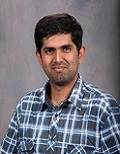
Bharadwaj Satchidanand
Massachusetts Institute of Technology, USA
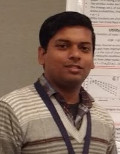
Rohit Verma
Intel Labs, India




